The Good Dinosaur represents the 16th offering from the animation powerhouse known as Pixar, which has slowly and meticulously built a reputation as one of the more reliable purveyors of filmed entertainment out there. So as this latest movie arrives, we take a look back at the team’s legacy.
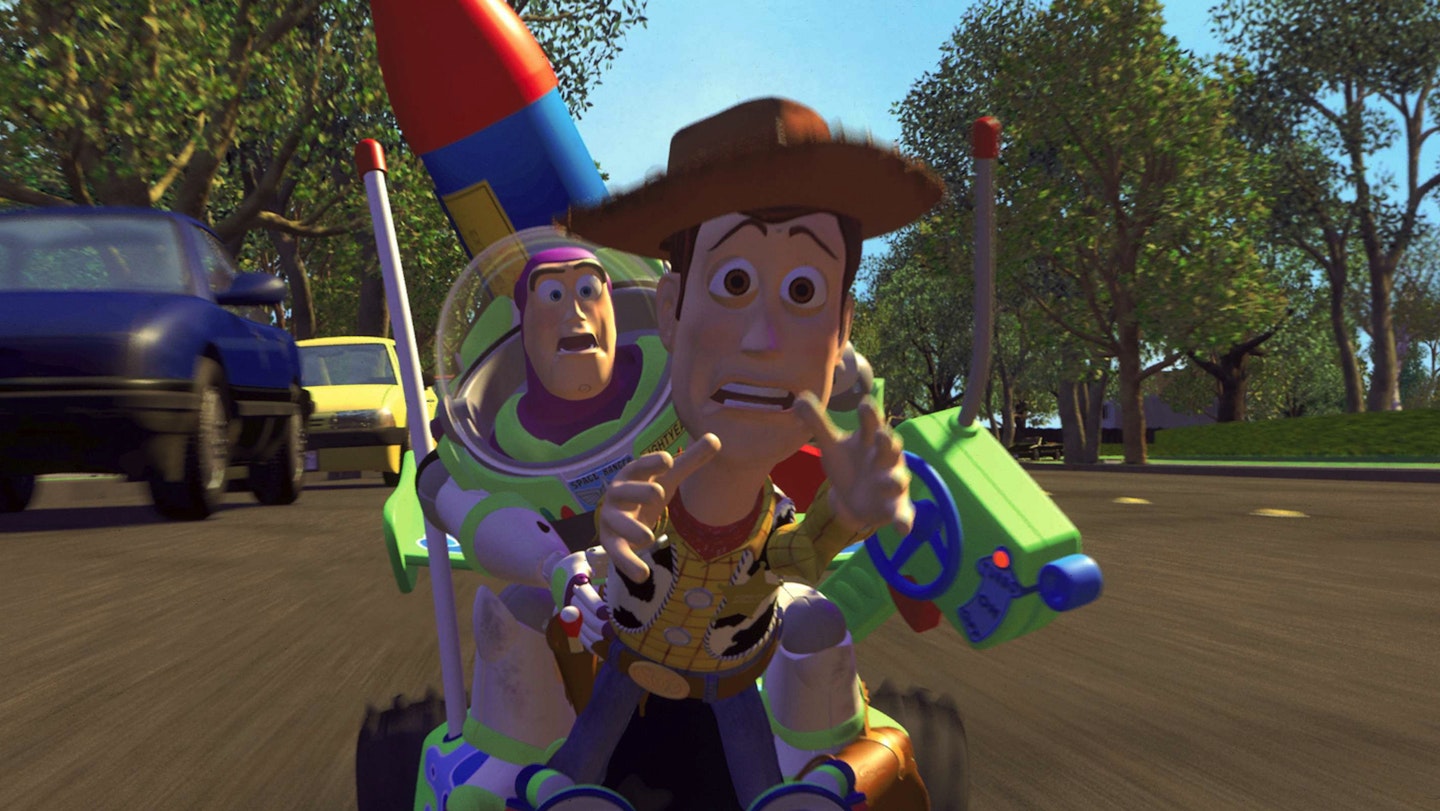
Toy Story (1995)
It hardly seems possible that the company’s first full-length CG feature arrived 20 years ago, but it’s true: funnelling what they’d learned producing shorts, adverts and working on projects for other filmmakers (Star Trek II’s Genesis demonstration video is a very early example of the ILM department that was spun off as Pixar), the team led by John Lasseter brought the world a little marvel. It may look basic compared to what the software (and indeed the people who use it) can do today, but Toy Story came bursting with genuine emotion and canny storytelling ideas that outshine the limited abilities of the render farm. Woody, Buzz, Bo Peep, Slinky Dog, Rex and the rest became icons and the film bore as many repeat viewings from adults as it did from their eager offspring.
For more: Toy Story 2 followed a few years later (more on that below), and there have been a wealth of TV spin-offs and shorts.
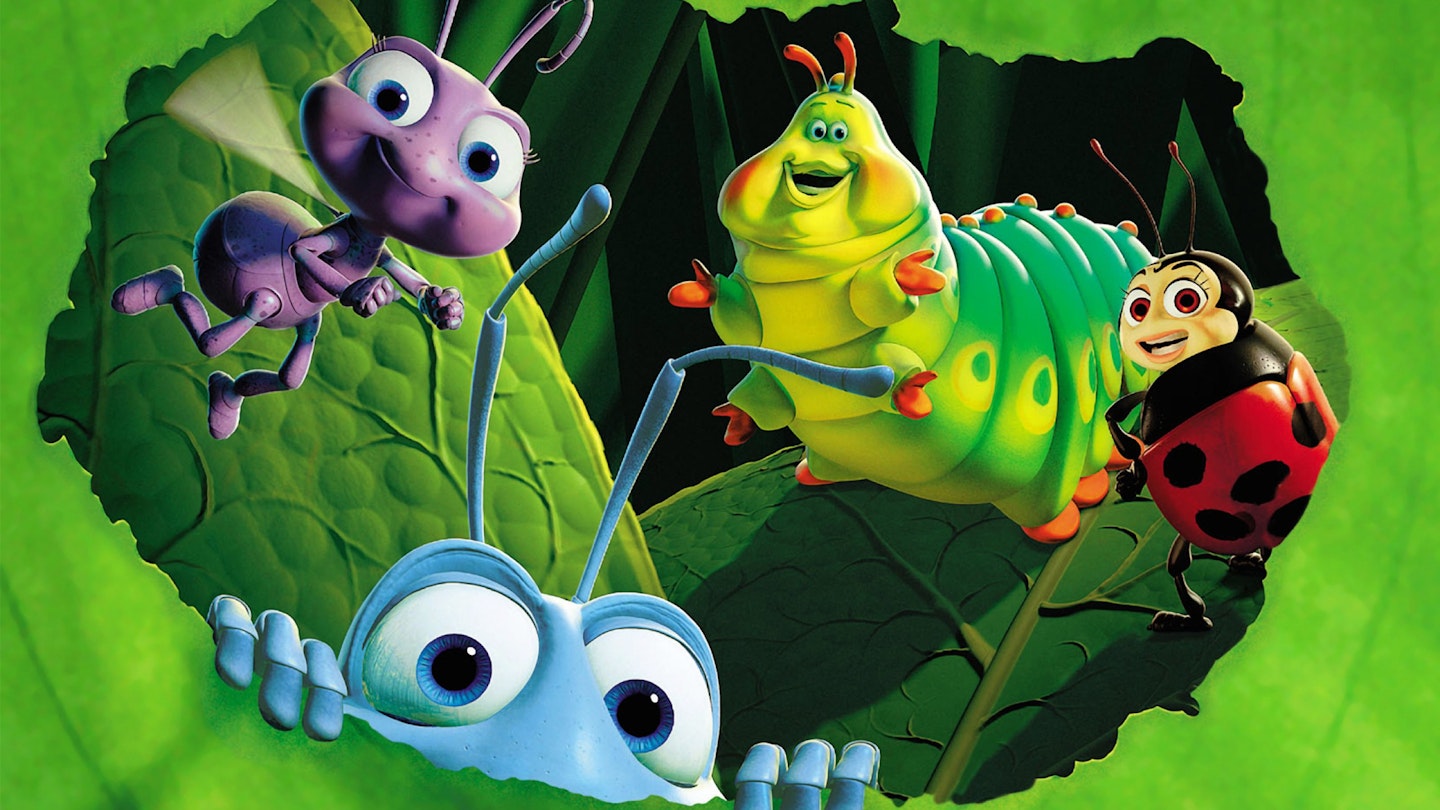
A Bug’s Life (1998)
Second films are always tough, especially when your first wins awards and is seen as a breakthrough in both technology and medium. So if A Bug’s Life shrinks a little by comparison, it’s entirely understandable. Still, this riff on The Ant And The Grasshopper meets the Seven Samurai works well. It was also the first time Pixar faced real competition from DreamWorks, which was rushing to get its own Antz out. That might have a slightly funnier script (and Woody Allen!) but A Bug’s Life retains Pixar’s eye for charming characters and accomplished ear for great dialogue.
For more: Bug’s is one of the few Pixar films to enjoy little in the way of spin-offs, though there is a short featuring Flik (Dave Foley) and some of the others explaining why insects are friends, not pests.
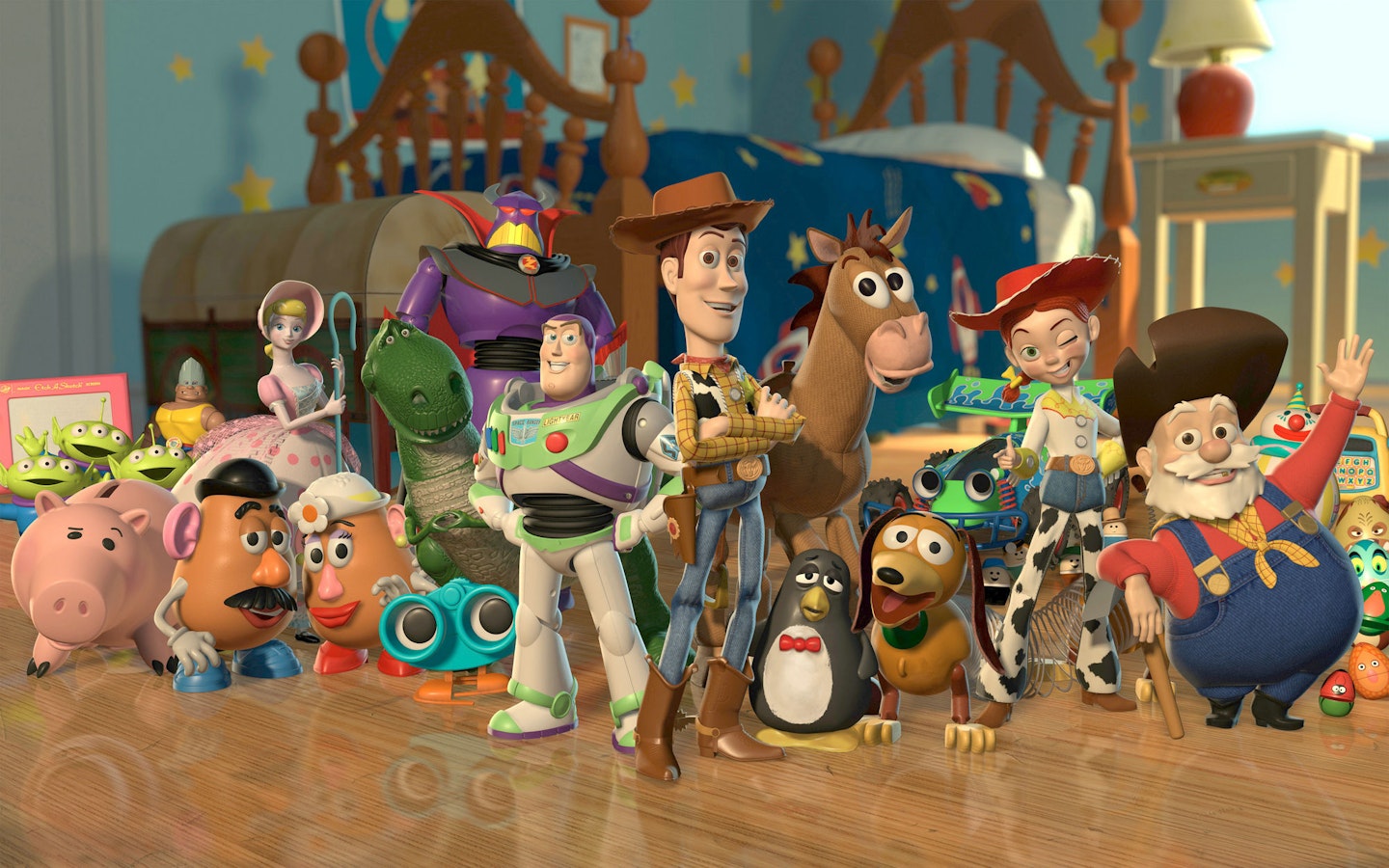
Toy Story 2 (1999)
If you thought A Bug’s Life had it hard, just imagine the pressure on this sequel to the company's big bang. And indeed, Toy Story 2 was becoming a bit of a headache: not covered by Pixar’s early five-film distribution deal with Disney (which specified original movies, not sequels), it was initially put into production by the Mouse House as a low-budget, direct-to-DVD sequel, but the initial results were so disappointing that Lasseter and his “brain trust” stepped into take it over. Sweating through a compacted production period, they nevertheless made something great, a follow-up that honours and expands on the original, full of development for Tom Hanks’ Woody in particular and fun references to the Buzz Lightyear shortage that hit stores after the first film.
For more: Toy Story 3 and, as mentioned before, shorts like Toy Story That Time Forgot and Toy Story Of Terror. Plus Disneyland offers a Toy Story shoot-em-up game.
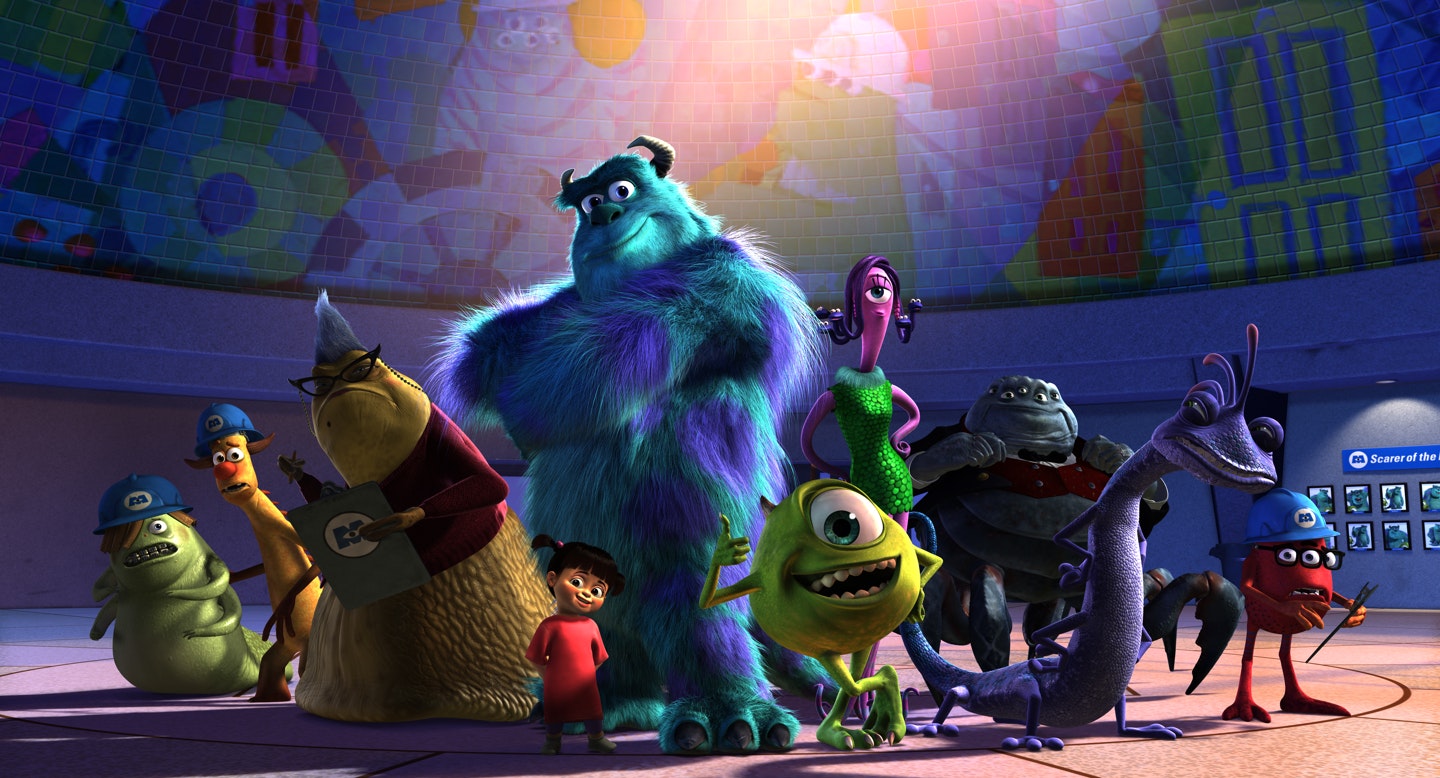
Monsters, Inc. (2001)
The first Pixar film not to be directed by John Lasseter, this one saw Pete Docter step into the limelight for a tale that channels our shared fear of creatures in the closet or lurking under the bed. It’s a typical example of the team taking a basic idea and running with it, coming up with the concept of a monster society powered by the screams of scared human children and focusing on two employees: wise-cracking eyeball-with-a-body Mike (Billy Crystal) and hairy beast Sulley (John Goodman). The crackling repartee between our heroes and their clear friendship drives this one, but look out for trademark wit from the writers and artists, including a restaurant tribute to monster maker Ray Harryhausen.
For more: Prequel Monsters University is also on this list, and there’s a short, Mike’s New Car, on the DVD.
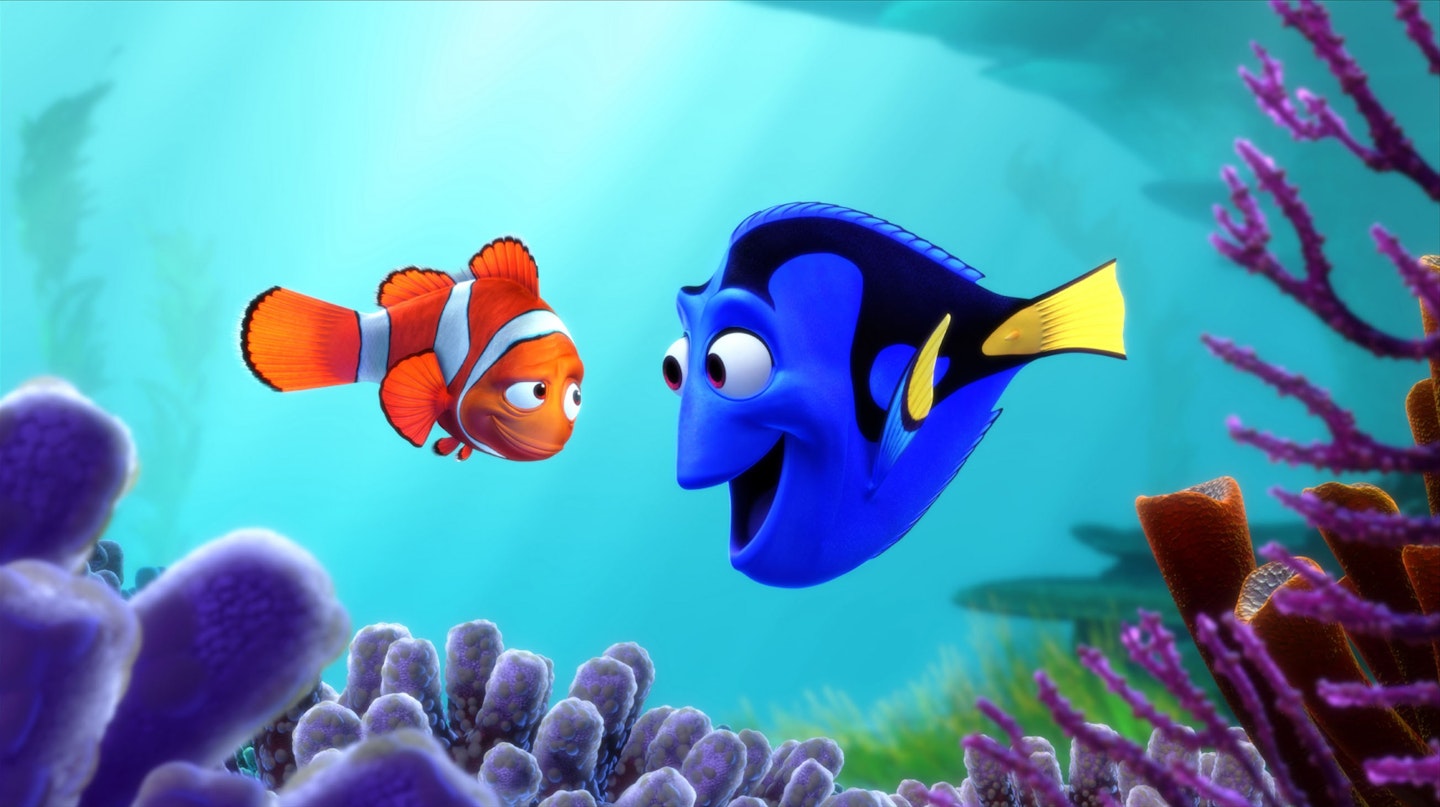
Finding Nemo (2003)
Andrew Stanton’s first turn in the director’s chair, drawing from his own fears as a father for the undersea tale of nervy clownfish Marlin (Albert Brooks), traumatised by a tragedy, who is loath to let his son Nemo (Alexander Gould) go exploring. And.. well, you can guess from the title what happens when Nemo decides to strike off on his own. It’s another example of the company deciding to eschew the huge star names commonplace in other CG films of the time for the right voice cast – including the likes of Ellen DeGeneres, Willem Dafoe, Stephen Root, Geoffrey Rush and Barry Humphries – to make the characters come to life.
For more: Sequel Finding Dory arrives in 2016 (see the trailer here) and Nemo’s name is on at least one theme park ride in Disney’s empire.
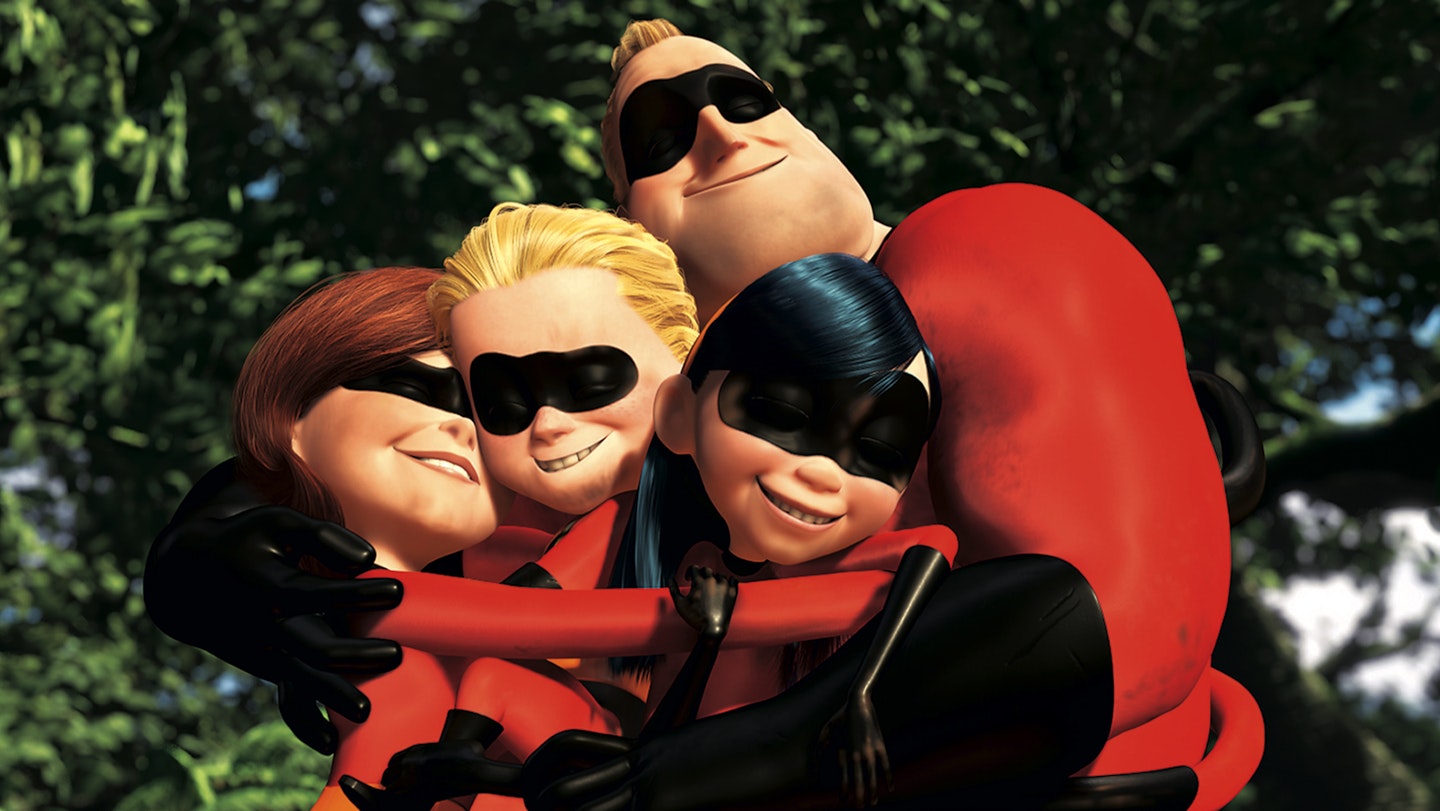
The Incredibles (2004)
What happens when you put the story focus and resources of Pixar behind Brad Bird, a man who has come up with wonderful films such as The Iron Giant? You get pure magic, is what. Long before the sprawling current Marvel universe was even a twinkle in Kevin Feige’s eye, The Incredibles were showing superheroes done right, blending the dynamics of a family with a retro-styled caper. A Fantastic Four-style group learn to deal with their issues and come together as both a family unit and a super-team, with a legion of knowing winks to comic book lore (the dangers of capes, the perils of villains taking time to monologue) all wrapped up with Michael Giacchino’s ritzy score.
For more: You can check out story fill-in Jack-Jack Attack on the DVD and there are other shorts around. Plus, Bird and many of the original artists are at work on The Incredibles 2 for 2019, which will surely be just as good. Right, Brad?
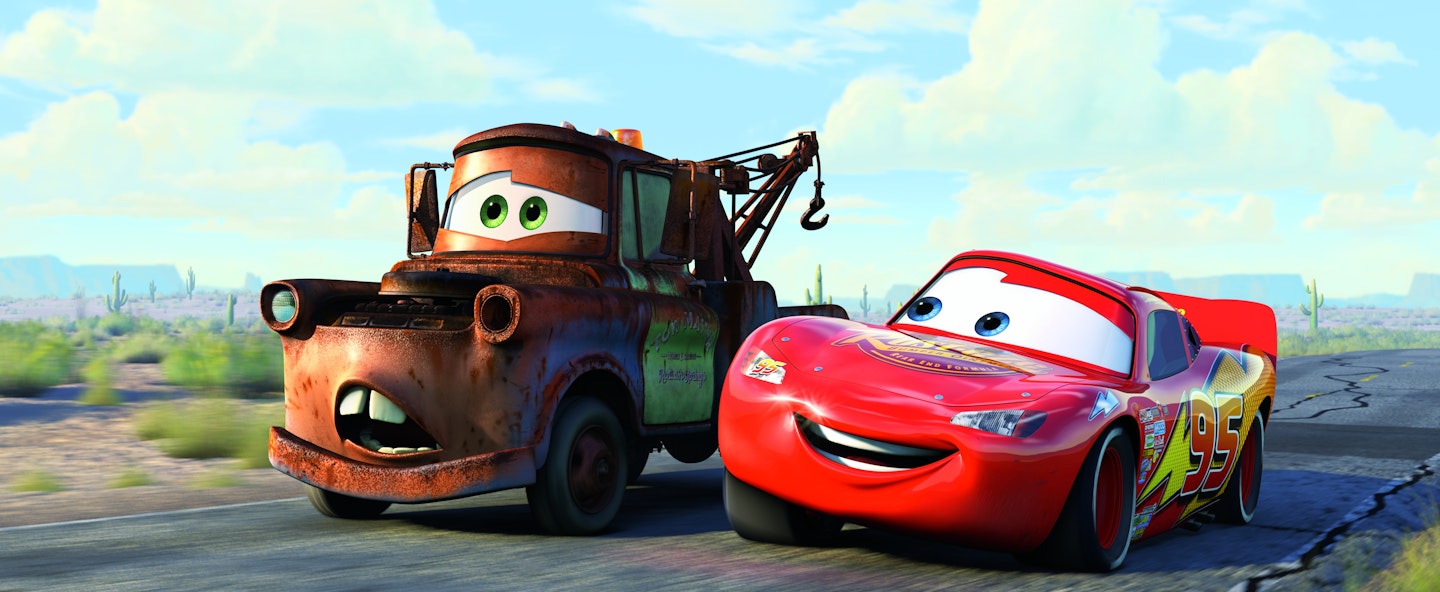
Cars (2006)
Though it was born from the typical passion that drives all Pixar movies (in this case, Lasseter’s obsession with cars, racing, and the bygone era of Route 66), Cars never quite comes alive like some of their other work. Sure, it has some lovely landscapes, and a typical attention to detail with the characters, but the idea of an arrogant race car taught life lessons by the residents of small town Radiator Springs, comes across as a lot more basic. It still did well with audiences and especially kids, who snapped up merchandise from the movie at a lightning (McQueen) pace.
For more: Short Mater And The Ghostlight spawned its own set of Cars toons, and the film is the subject of an entire land at Disney’s California Adventure theme park. And then there’s Cars 2, which we'll come to shortly.
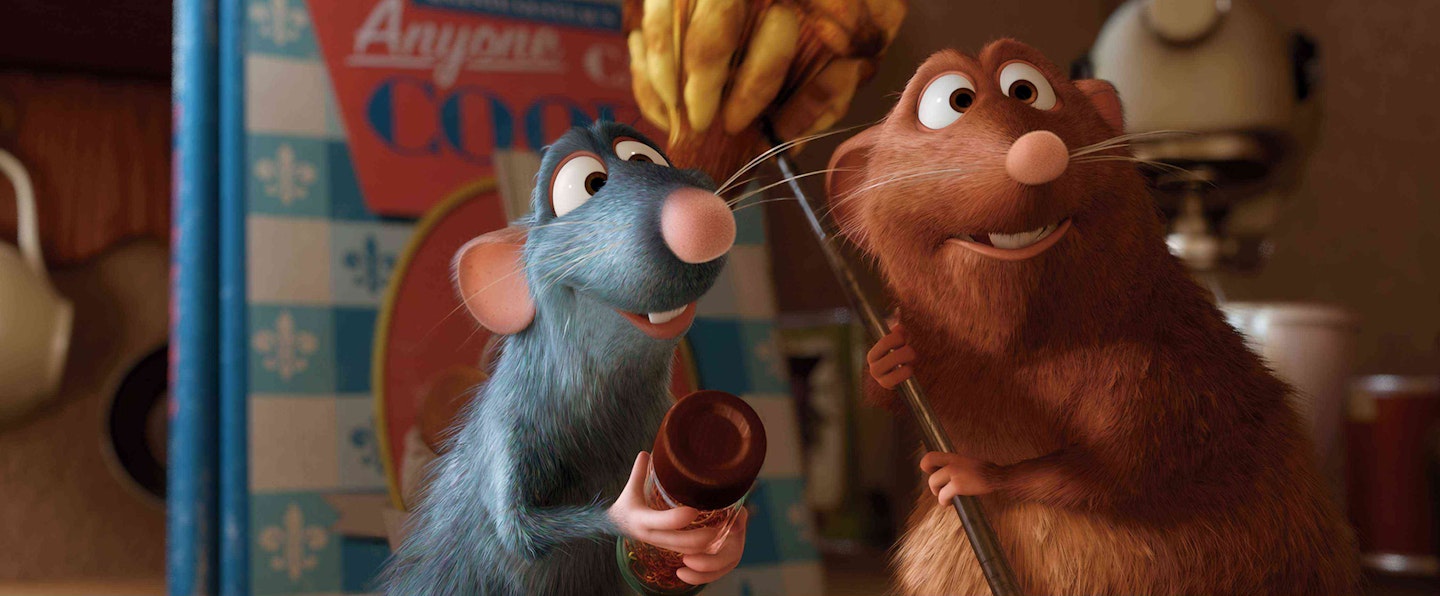
Ratatouille (2007)
There’s a saying at Pixar (and other CG animation houses) that their films are always failing until they’re not. Ratatouille was a more serious case in point: Jan Pinkava, who had won an Oscar for his short Geri’s Game, came up with the original concept, but a lack of confidence in his story department saw him replaced with Brad Bird (Pinkava left the company shortly after this). Bird, working from the basics in place, retooled a lot about the story and the characters and brought another winner to life. Culinary delight and pushing against the boundaries life has set for you are at the forefront here, with Patton Oswalt’s winning voice-over as Remy the foodie rat making it all click.
For more: Short Your Friend The Rat can be found on the DVD. It also probably launched a thousand experiments with new cooking ideas.
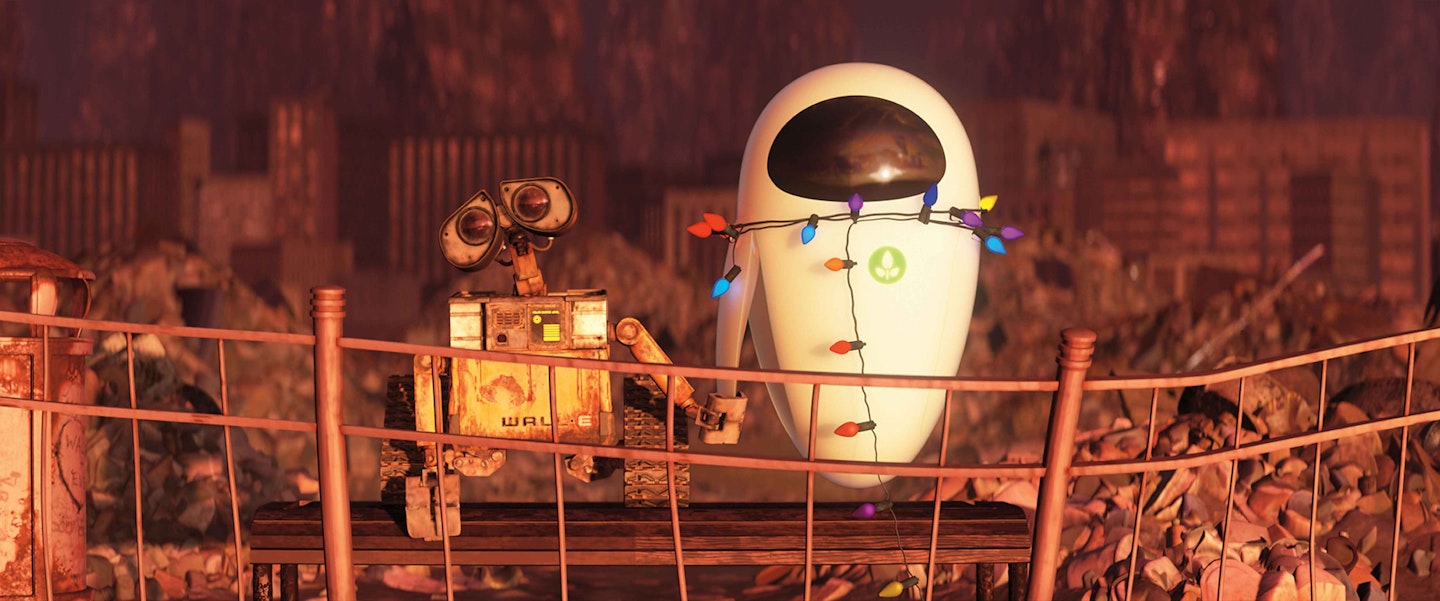
WALL-E (2008)
Stanton’s second film tackled loneliness, love, duty and the future of humanity, all from the point of view of a squat little robot designed as a miniature rubbish compactor. WALL-E’s sparks of emotion (the connection he forms with sleek planetary probe EVE is pure, old fashioned musical romance) tied to the dystopian-yet-hopeful sci-fi concept worked wonders, continuing one of the strongest runs in the studio’s history so far. And it doesn’t hurt that he had sound genius Ben Burtt creating the robo-voices while legendary cinematographer Roger Deakins consulted on the look of the film, making it even more visual than usual.
For more: Adorably obsessed cleaner 'bot BURN-E gets his own short, though despite the product-heavy subplot, the company has been surprisingly light on finding other outlets for the robot and his friends.
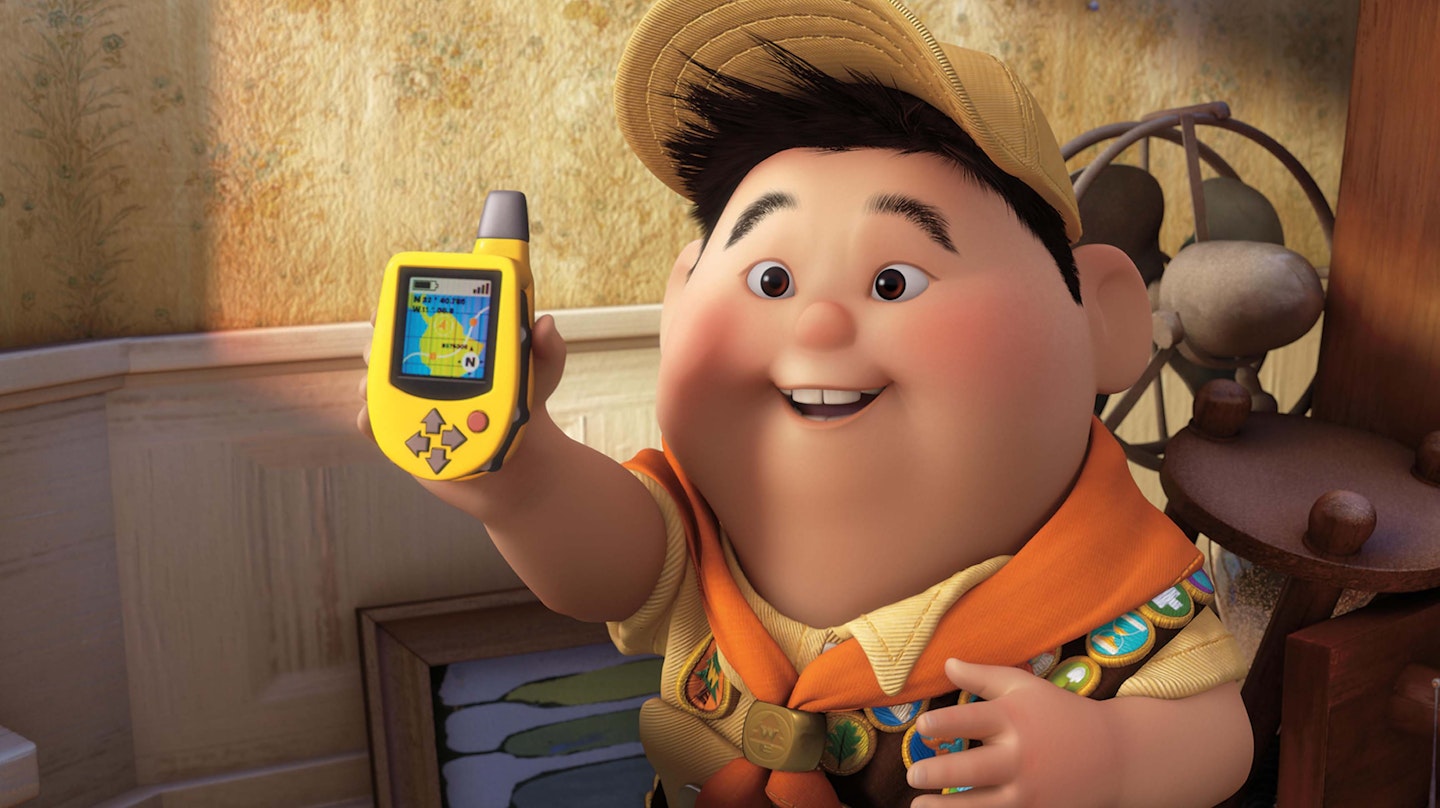
Up (2009)
It’s not every film that can break your heart with a montage that runs for a little under three minutes, scored to some of the most beautiful work Michael Giacchino has created, but that’s Up. While the crazier adventures of grumpy old geezer Carl (Ed Asner) and hyperactive wilderness ranger Russell (Jordan Nagal) may not quite deliver the same kick as that opening, Pete Docter’s second effort as director was still a clear Oscar winner. And who doesn’t love Dug the – SQUIRREL! – dog?
For more: George & A.J. (which followers the retirement home workers sent to fetch Carl) is perhaps a lesser entry in the shorts, but it still has its charms.

Toy Story 3 (2010)
Plenty of people said it shouldn’t be done. Why tempt fate by producing a sequel to two of the company’s best movies years later? It’s all in the ideas, folks (that, and a little luck), as Lee Unkrich took over the director’s chair from the endlessly busy Lasseter and delivered something wonderful. It’s darker and sadder than the previous Stories, but it’s exactly what was needed to close out this particular chapter of Woody and Buzz’s adventures. And it made grown-ups cry alongside children in the cinema, a little like Up before it.
For more: Lasseter is now in production on Toy Story 4 for 2018. Time to break out the “No Pressure” signs.
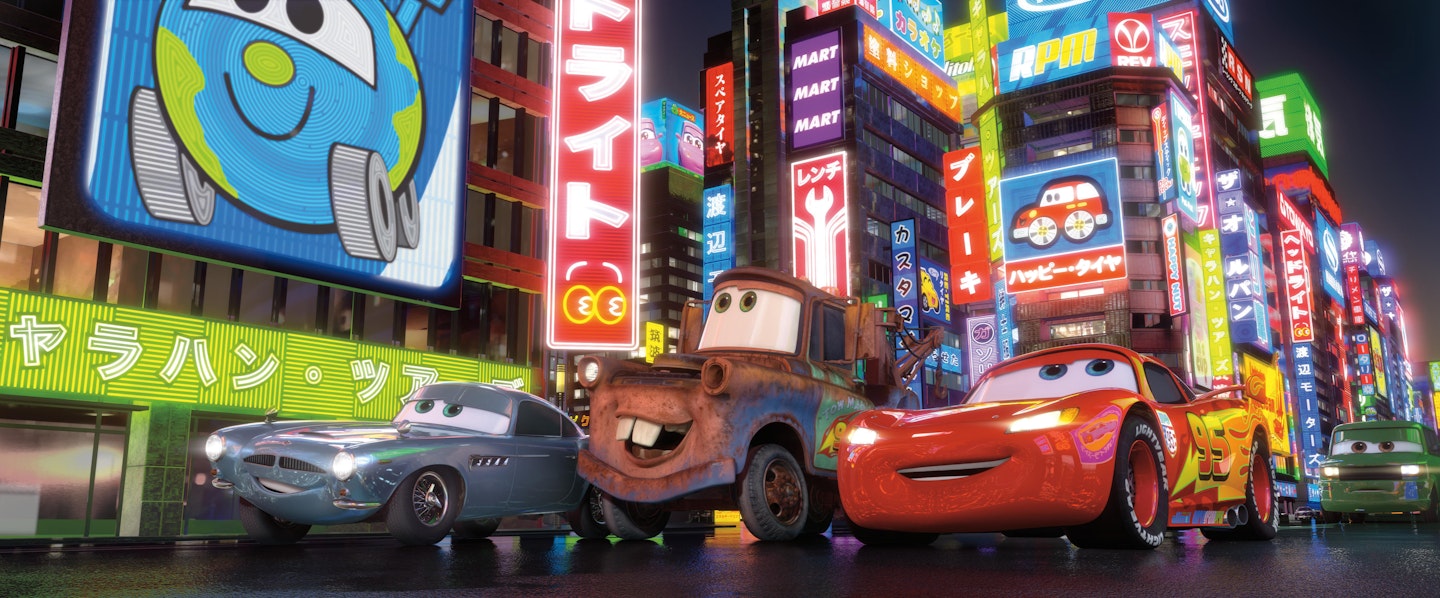
Cars 2 (2011)
That run of amazing films couldn’t last, even for Pixar, and Cars 2 is, sad to say, the one that shut it down. Though still made with the same level of care and attention to detail, this shiny, speedier spy spoof using Lightning McQueen (Owen Wilson) and Mater (Larry the Cable Guy) just doesn’t possess the same level of heart as even the original. Partly the loss of Paul Newman as the beating heart and noble wisdom behind the voice of Doc, and partly because it feels so much more like any other studio’s output, and less a story they had to tell, more one for the merchandising.
For more: The Cars films might not engender quite the same about of love, but they’re certainly generating a franchise. DisneyToon Studios (a non-Pixar spin-off factory) has been having success with the Planes movies, which work fine in themselves, but never have the feel of Pixar productions.
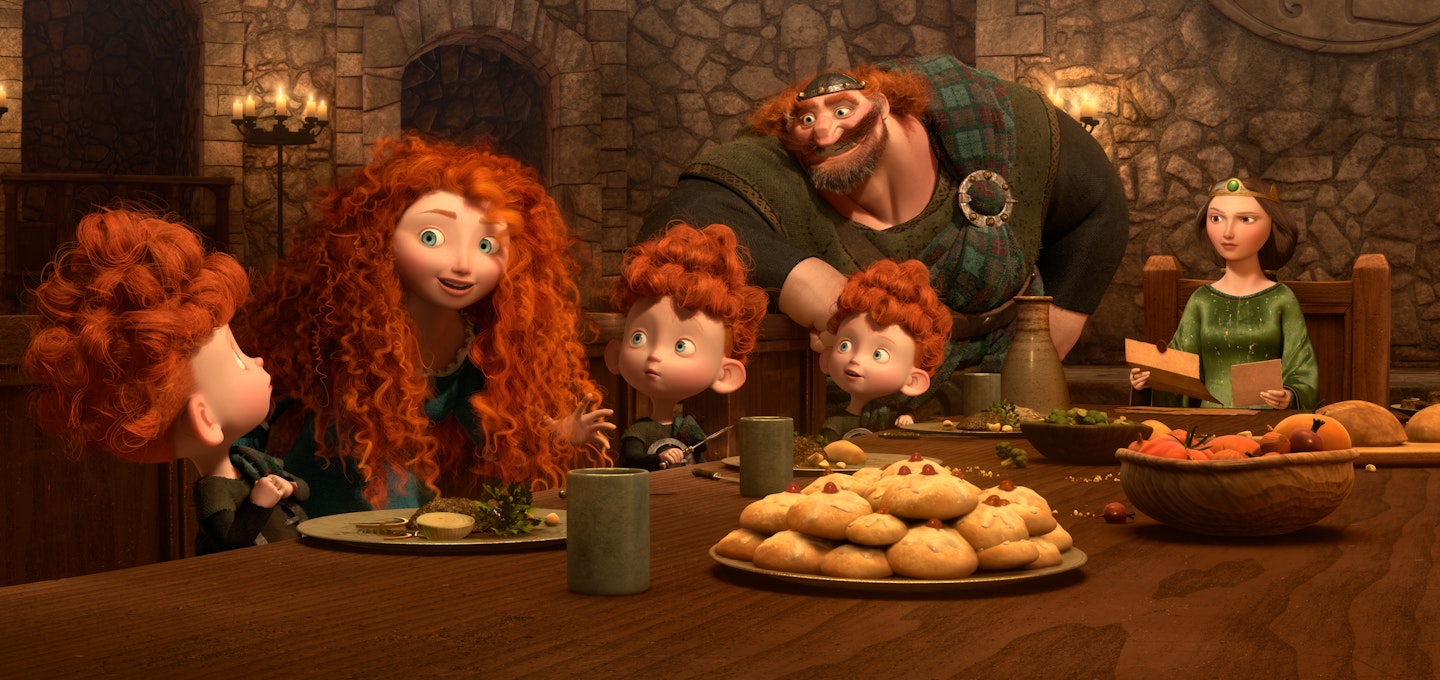
Brave (2012)
More trouble for the studio when original director Brenda Chapman was unceremoniously replaced and the storyline/cast tweaked. Brave is a weird one for the studio – confident enough to ditch its original “no fairy tales” dictum, this stab at crafting a new princess figure is largely successful, but doesn’t quite reach the heights of Nemo et all. Still, props for hiring a great voice cast in Emma Thompson, Billy Connolly, Robbie Coltrane, Kelly MacDonald and Julie Walters.
For more: Spin-off short The Legend Of Mor’du doesn’t add much to the story, but Brave’s Merida is now part of fairy tale-re-writing US drama series Once Upon A Time.
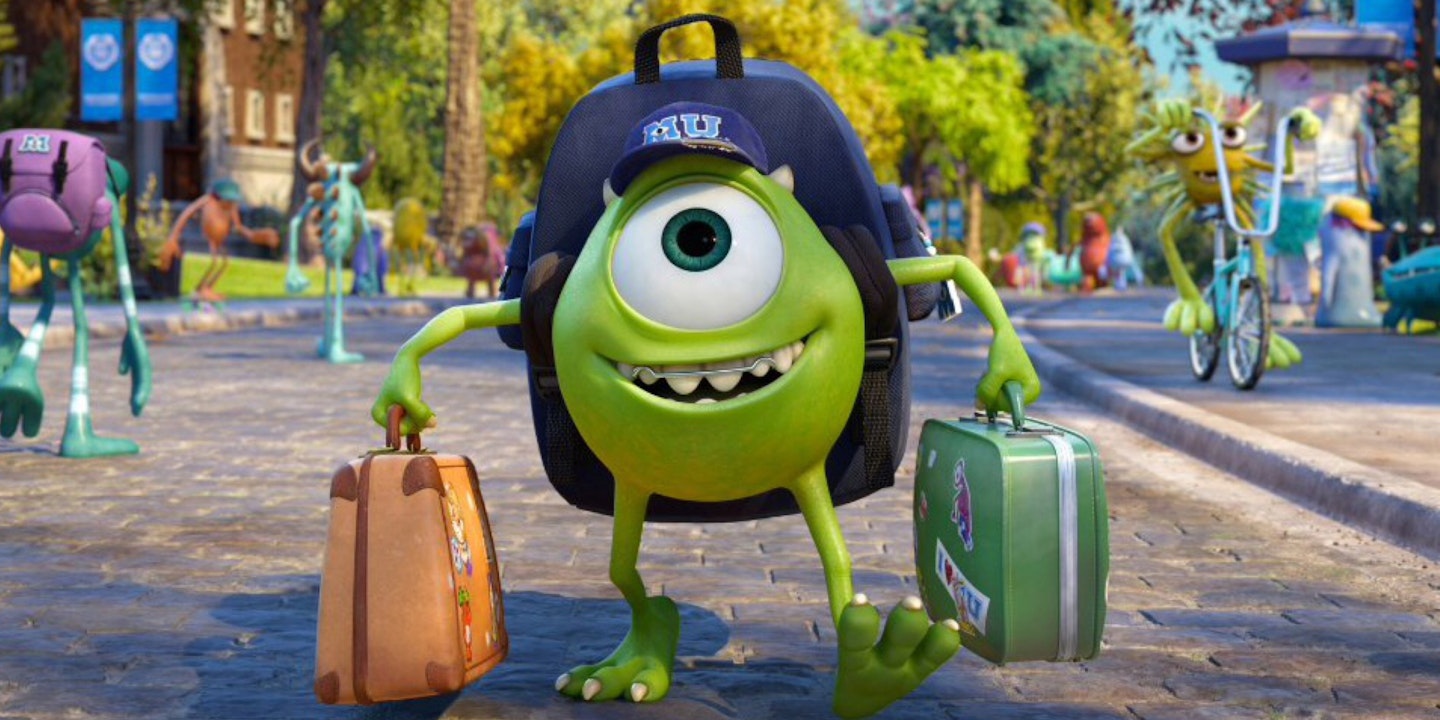
Monsters University (2013)
Though Pixar could simply have given us more time with Mike and Sulley as we see them at the end of Monsters, Inc., the company and director Dan Scanlon wisely made the choice to send the clock turning back to their early days, when we learn that they made for uncomfortable college roommates. Sure, that means we know how the story ends, but the journey is worthwhile here, especially when you add Helen Mirren and Nathan Fillion into the voice mix.
For more: Short film Party Central continues the fun.
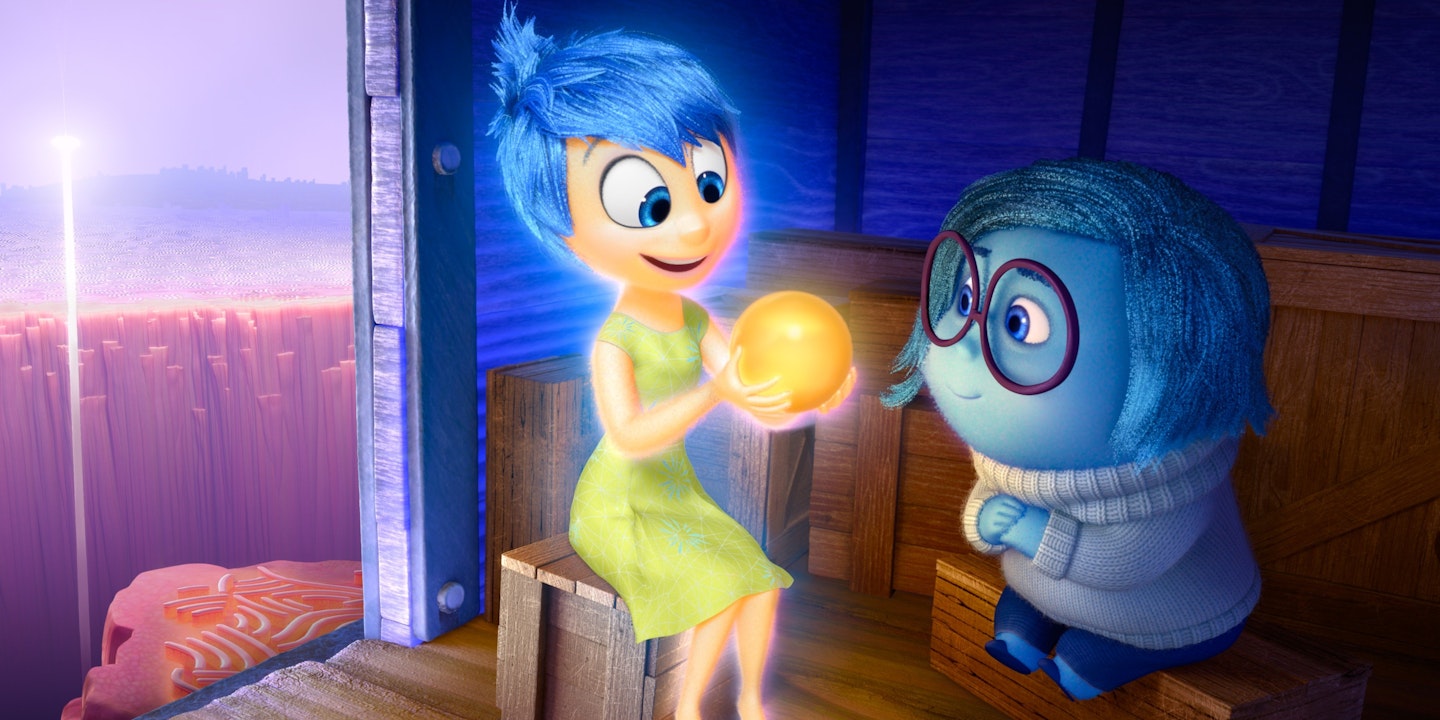
Inside Out (2015)
And so we come to this year’s new Pete Docter. Which somehow managed to turn the seemingly complex concept of the emotions in a young girl’s head into one of the most spellbinding, loveable and thoughtful movies the company has ever made. Boasting the likes of Amy Poehler, Phyllis Smith, Mindy Kaling, Bill Hader and Lewis Black on mic duty, it’s sheer genius in places (abstract thought brought so skilfully to life in a family animation?) and will also go straight for the heartstrings in way that feels authentic. Inside Out feels like something that will be helping parents and kids connect for years to come.
For more: Short Riley’s First Date? (the question mark is intentional) is on the home entertainment release.
.jpg?ar=16%3A9&fit=crop&crop=top&auto=format&w=1440&q=80)